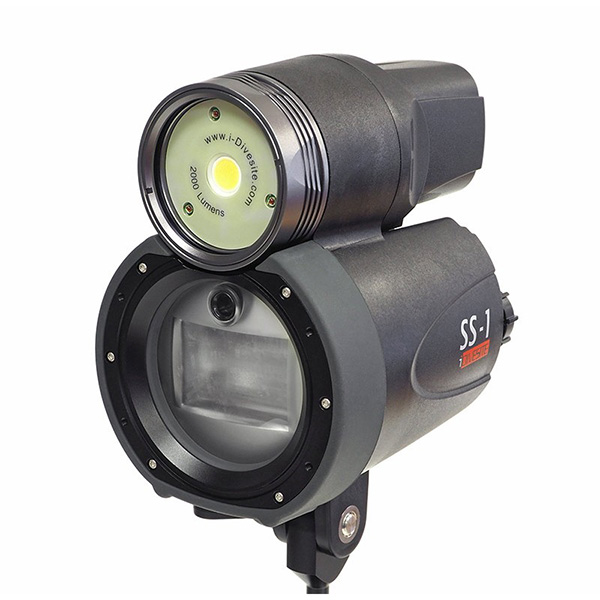For Still Photography, Strobe or Video Light?Contents of this Issue: Invasive Lionfish Encounter Top Predator Is the Sardine Run an Endangered Species? A Sparkling South African Side Trip: $16,000 The Man Who Made Your Diving Safer Why You Can Dive with 700 Sharks in Fakarava Find Yourself in Deep Trouble? Sherwood, You Have a Camband Problem A Gruesome Start to A Dive Trip Mako Shark Bite Lawsuit Makes Court Progress Flower Garden Banks May be Off Limits to Divers A Realistic Video Game Based Underwater For Still Photography, Strobe or Video Light? A Cosmetic Risk to Shark Populations Diving Death Compounded by Poor Payout Editorial Office: Ben Davison Publisher and Editor Undercurrent 3020 Bridgeway, Suite 102 Sausalito, CA 94965 the choice has become less clear from the September, 2016 issue of Undercurrent
Photography techniques continually evolve. Back in the '60s, when I first started life as a photographer, lighting for photography was directly developed from lighting for movies, with huge spotlights of 5000 watts and more. Flash was limited to expendable flashbulbs, some as big as household bulbs, which came at a cost. This was paralleled in the underwater photography world, where pioneers used big flashbulbs because the batteries needed to fuel big constant light sources were impractical. Then came the reliable electronic strobe, and eventually, underwater electronic strobes became reliable and small enough not to encumber a diver carrying a big camera. Electronic strobes became "de rigeur" for underwater still photography. However, shooting video was different. You needed constant light output. As recently as 1992, I carried video rigs into the water that weighed more than 150 pounds, thanks to the huge ni-cad batteries for the lights. They often had to be derricked into the water. Even so, the lights were not bright enough to light up a subject more than 30 inches distant. Today you can buy a 15,000 lumen LED light that weighs less than two pounds, including its battery. Underwater strobes are tiny compared with their light output. For video, obviously, you need a constant light, but should you now consider video lights for still pictures?
Electronic strobes, even in a small package, can deliver a high output, more even than that 15000 lumen light, in an instant burst, freezing the action. A set of four small batteries will last for hundreds of exposures. However, you need to know what you are doing. This comes with practice, because you cannot see the effect before you take the shot. The light pulse must synchronize with the camera's shutter opening. With modern digital cameras, that can be more complex than you'd imagine. If you use the camera's little on-board strobe to trigger the main off-board strobe via a fiber-optic connection, you need the off-board strobe to be able to tell the difference between a pre-flash and the camera's main flash. Some underwater strobes have a built-in aiming light, too, but they're only good for telling you where the strobe is pointed during a night dive. To help a camera focus on macro subjects, it's often a good idea to employ a separate aiming light mounted on the camera. These can have an auto-flash-off function so there is no annoying spot of light added to your pictures. These aiming lights can also have a red light mode so marine life is not aware of your presence until you ambush it with the pulse of white light from your strobe. With a video light, you can see its effect before taking the picture, but it will not give you a small working exposure as a flash, and also provides less depth-of-field (focus). It can also be difficult to get close to a subject, because the light might scare it. However, many photographers are using video lights for extreme macro photography because they can move the light so close. Of course, you can use a constant light source (video light) to shoot live action as well as still images, and many underwater photographers switch between the two during a dive. A video light's controls are easy to understand, as well. As for cost, by the by the time you've mounted it on the camera, the cost will be around the same as a strobe. So which is best for your needs, a strobe light or a video light? A new product combines both. The newly developed range of lighting systems called the iDivesite SS-1 Symbiosis and the doubly powerful SS-2 Symbiosis each combine a 2000 lumen video light with a strobe, powering both from the same rechargeable battery. Either makes a viable alternative to two separate items of equipment for those wishing to shoot both still photographs and video on the same dive, although the weight of the battery makes both slightly unwieldy. The designs are so new that I have yet to hear confirmation of reliability. They are expected to cost around $600 and $750, respectively. - John Bantin |

I want to get all the stories! Tell me how I can become an Undercurrent Online Member and get online access to all the articles of Undercurrent as well as thousands of first hand reports on dive operations world-wide
| Home | Online Members Area | My Account |
Login
|
Join
|
| Travel Index |
Dive Resort & Liveaboard Reviews
|
Featured Reports
|
Recent
Issues
|
Back Issues
|
|
Dive Gear
Index
|
Health/Safety Index
|
Environment & Misc.
Index
|
Seasonal Planner
|
Blogs
|
Free Articles
|
Book Picks
|
News
|
|
Special Offers
|
RSS
|
FAQ
|
About Us
|
Contact Us
|
Links
|
3020 Bridgeway, Ste 102, Sausalito, Ca 94965
All rights reserved.


